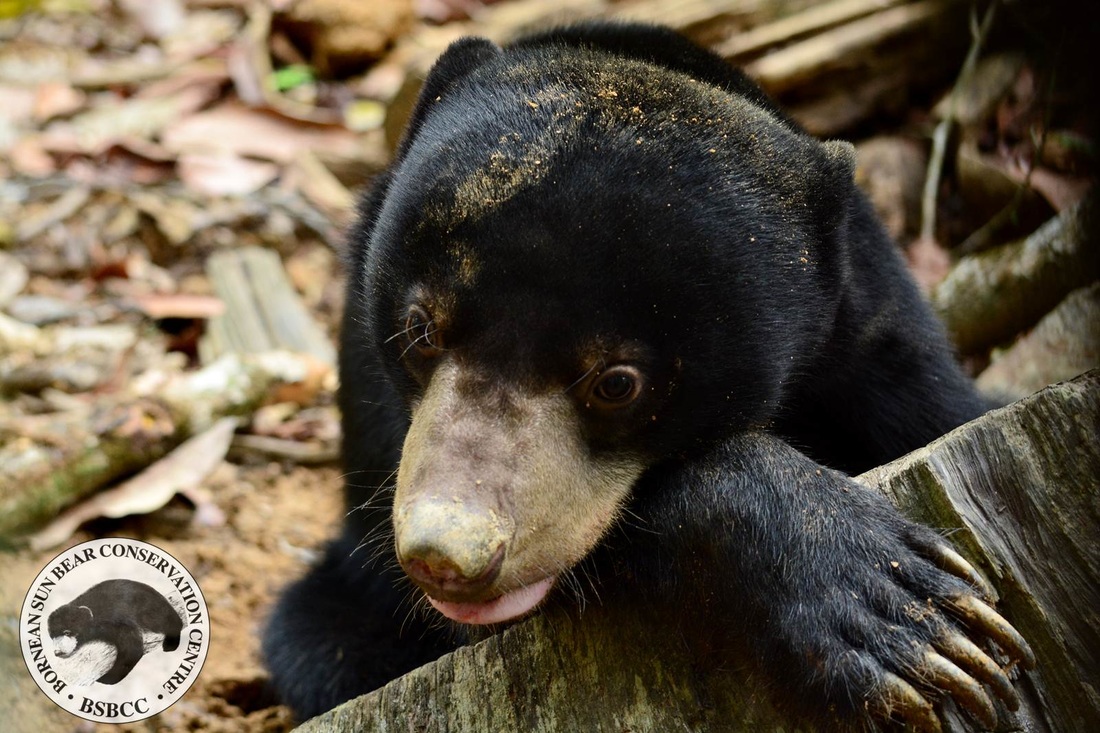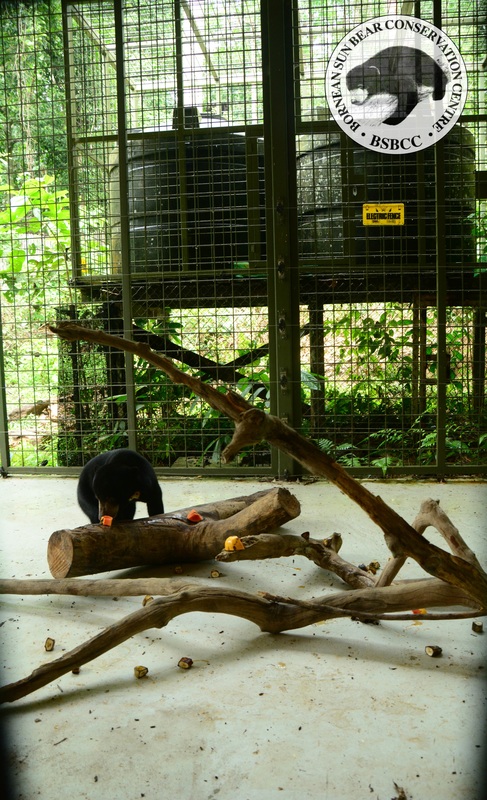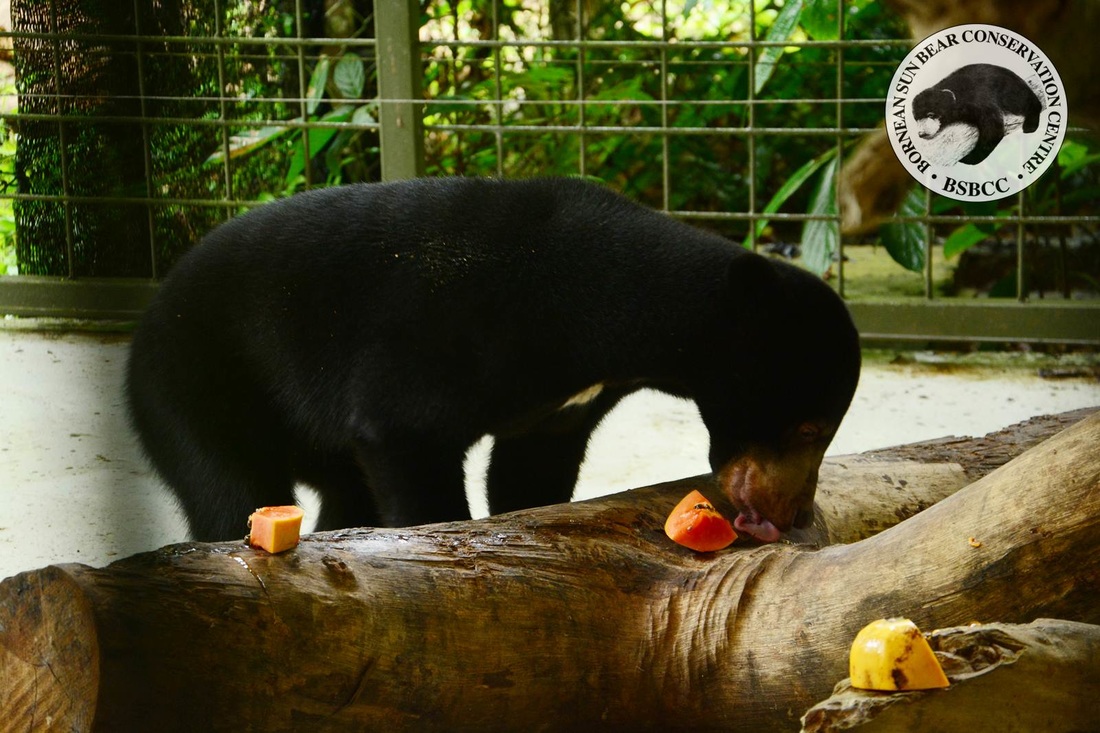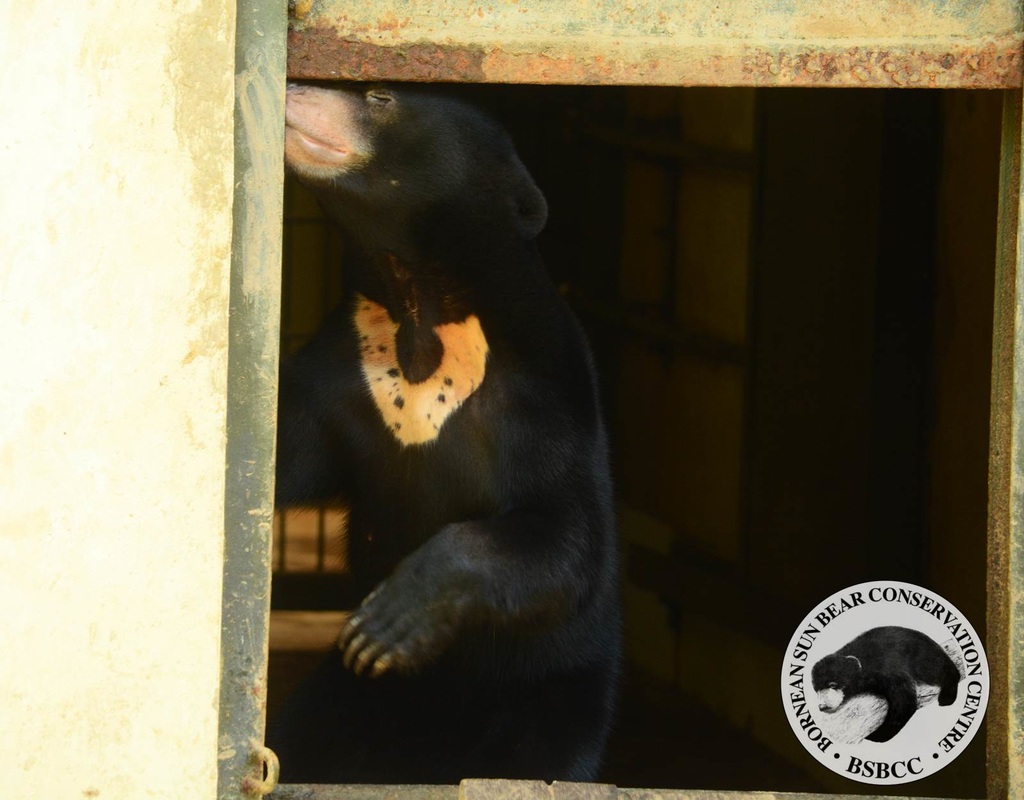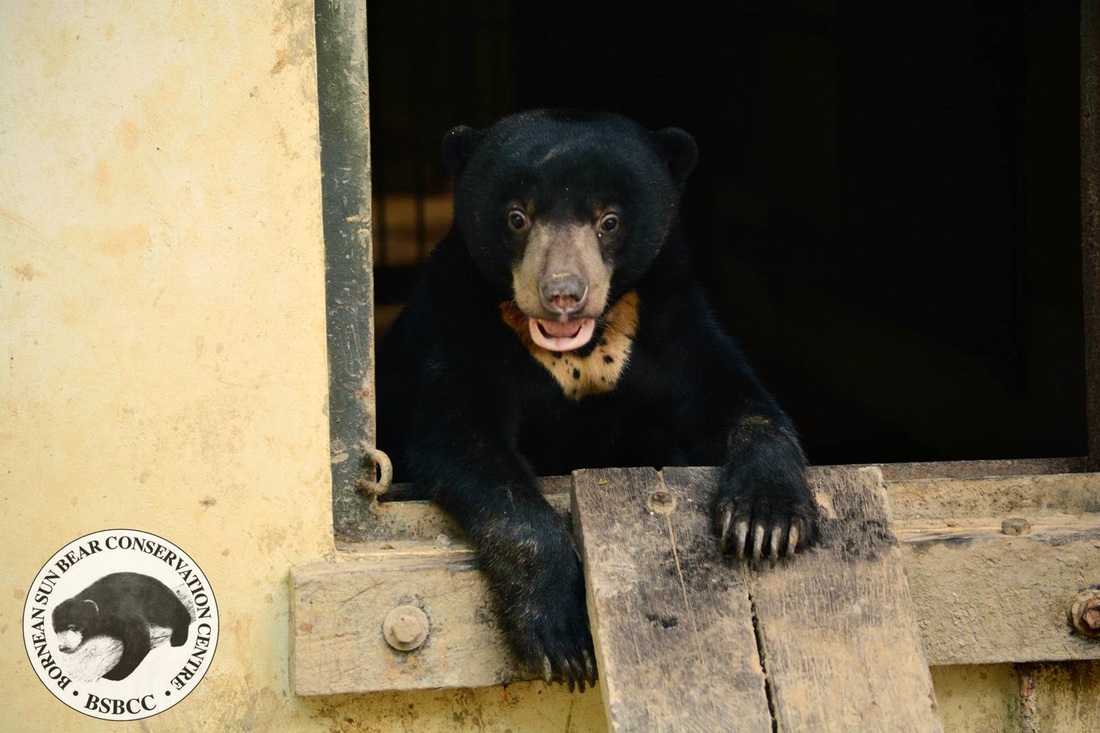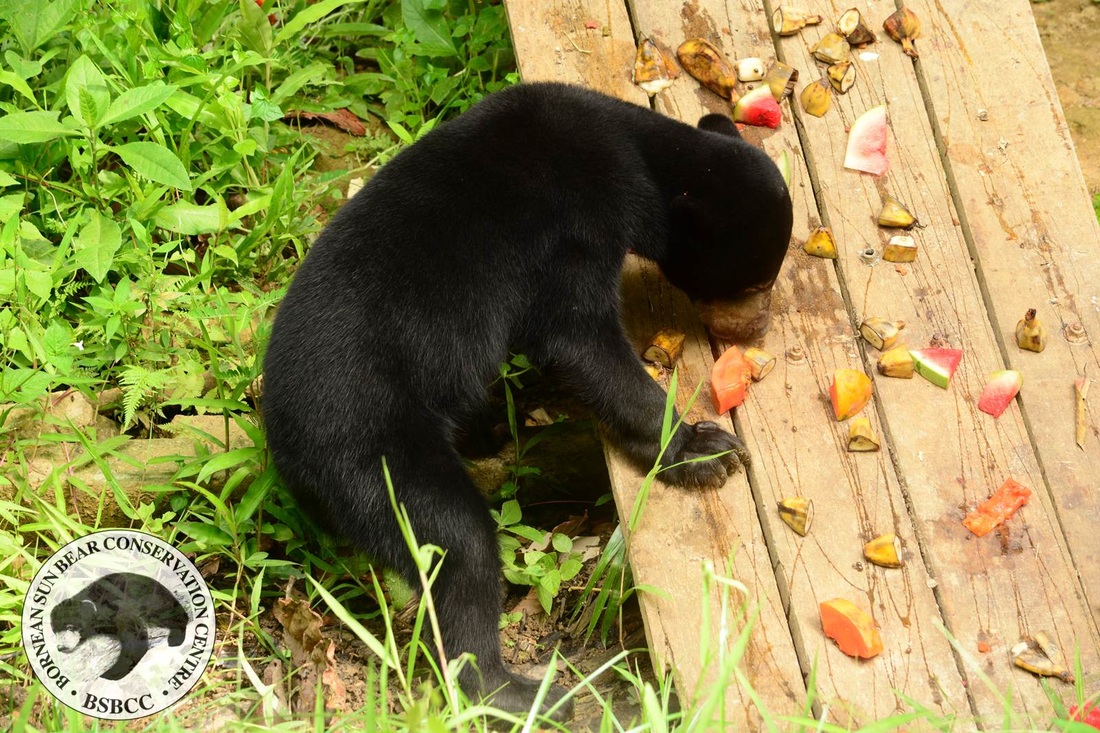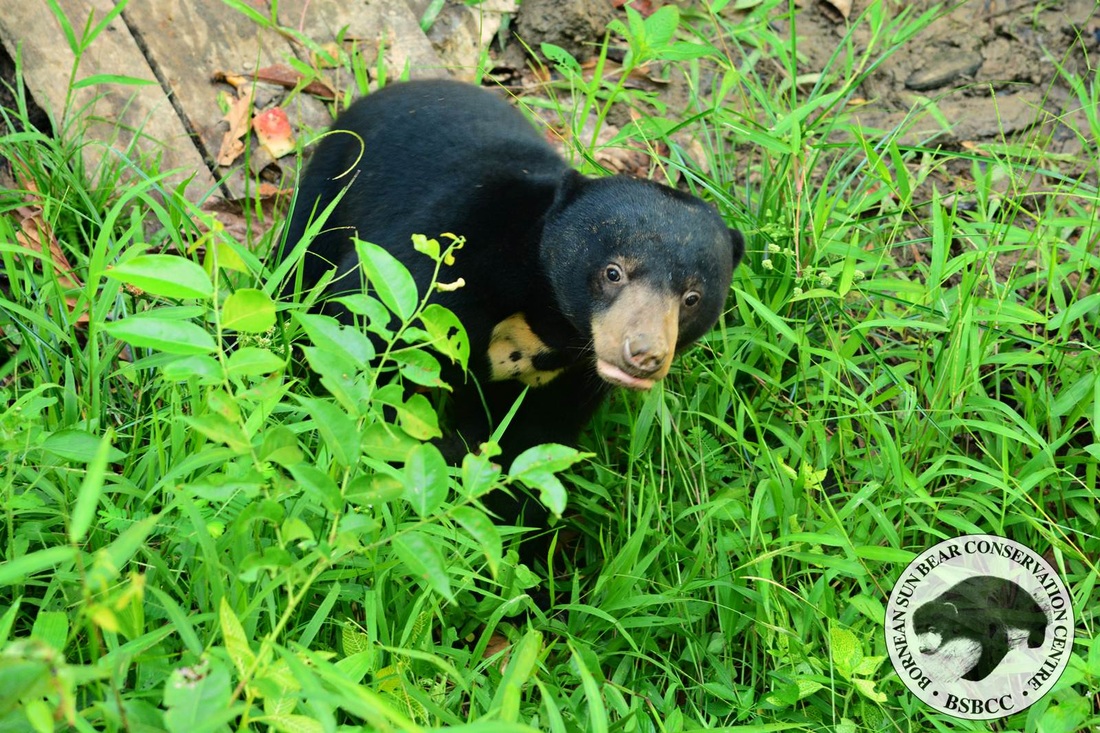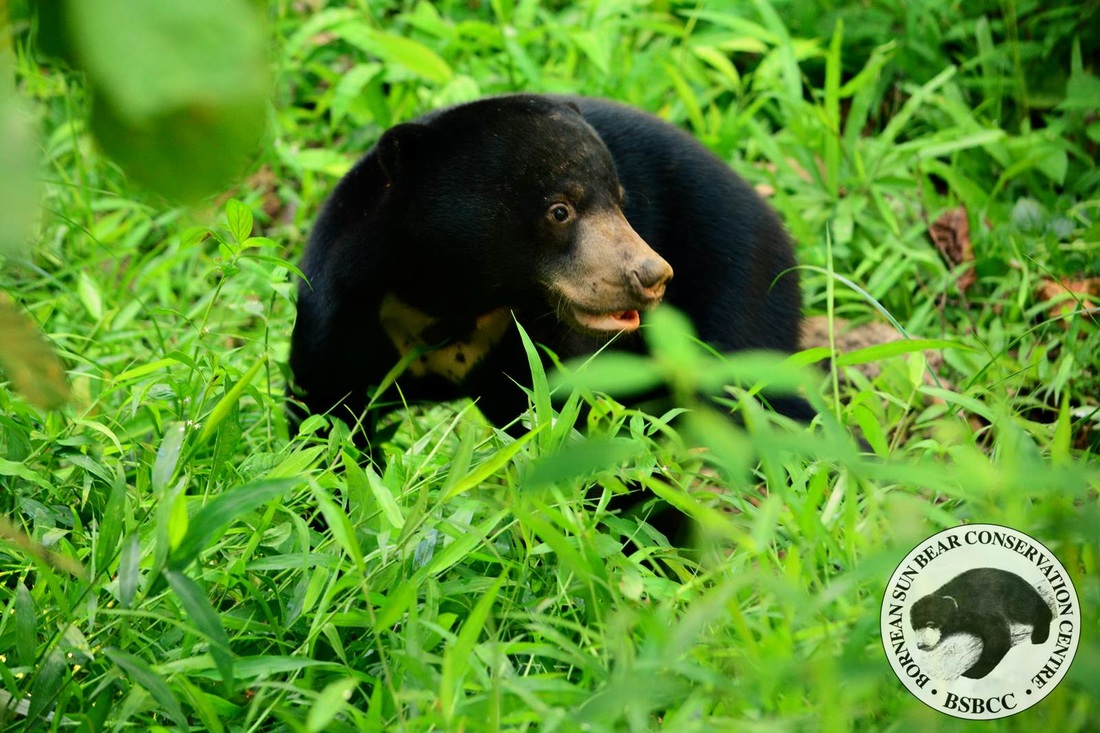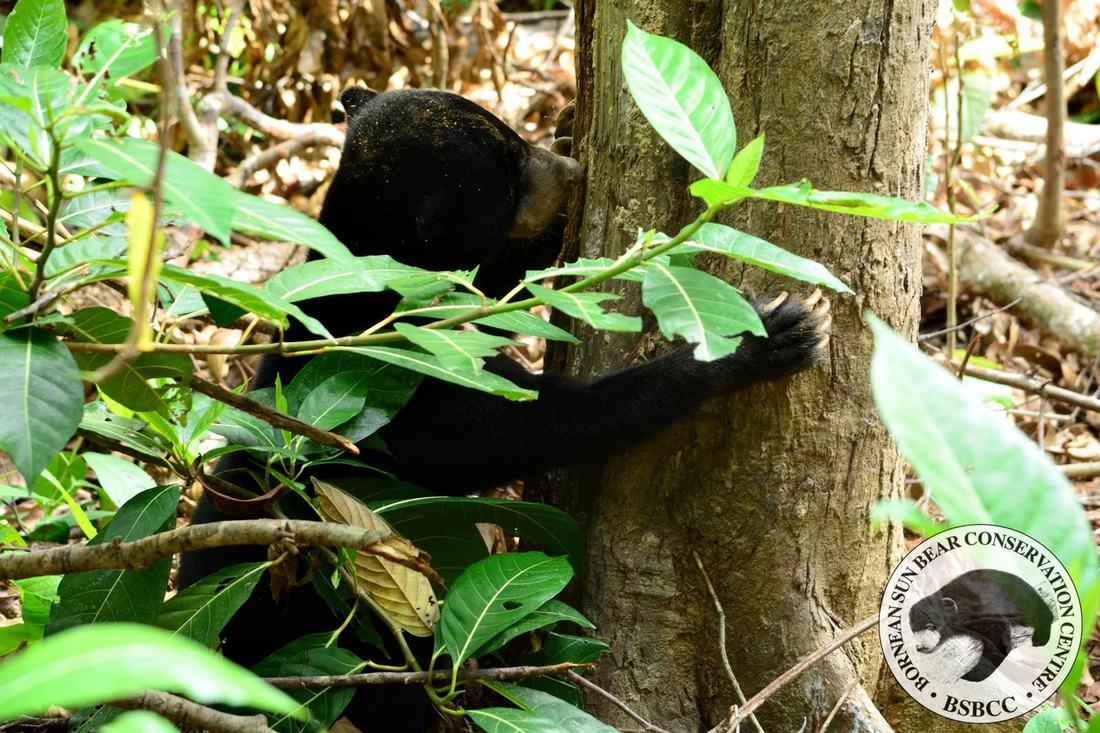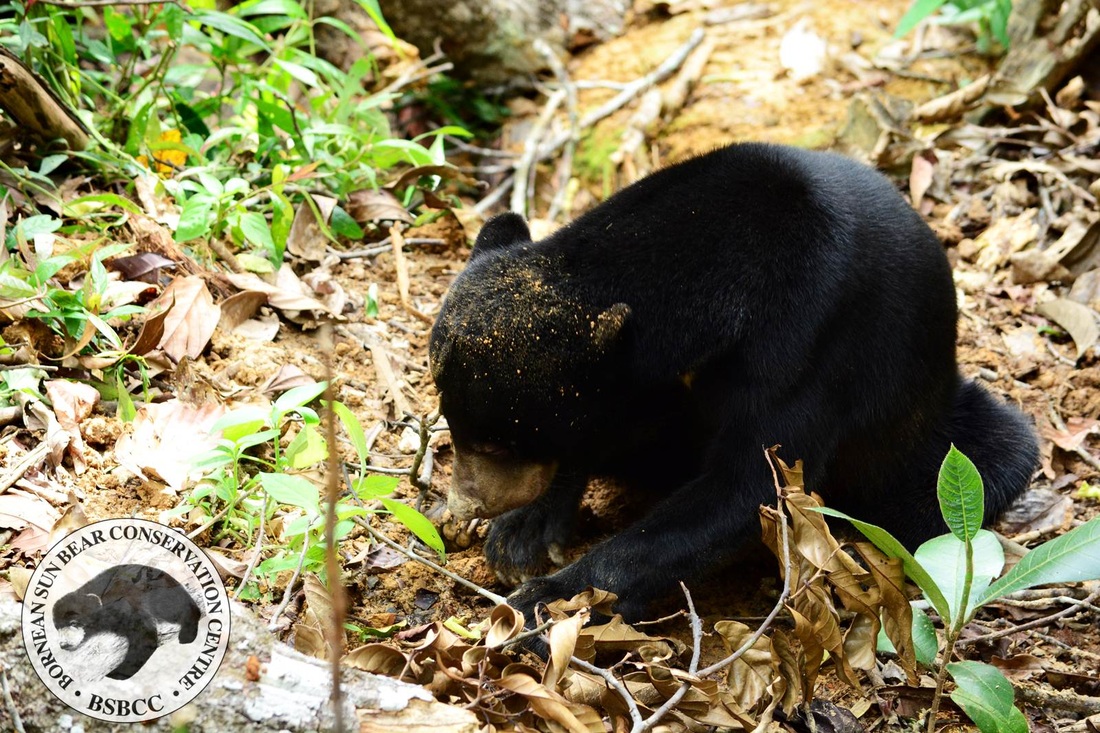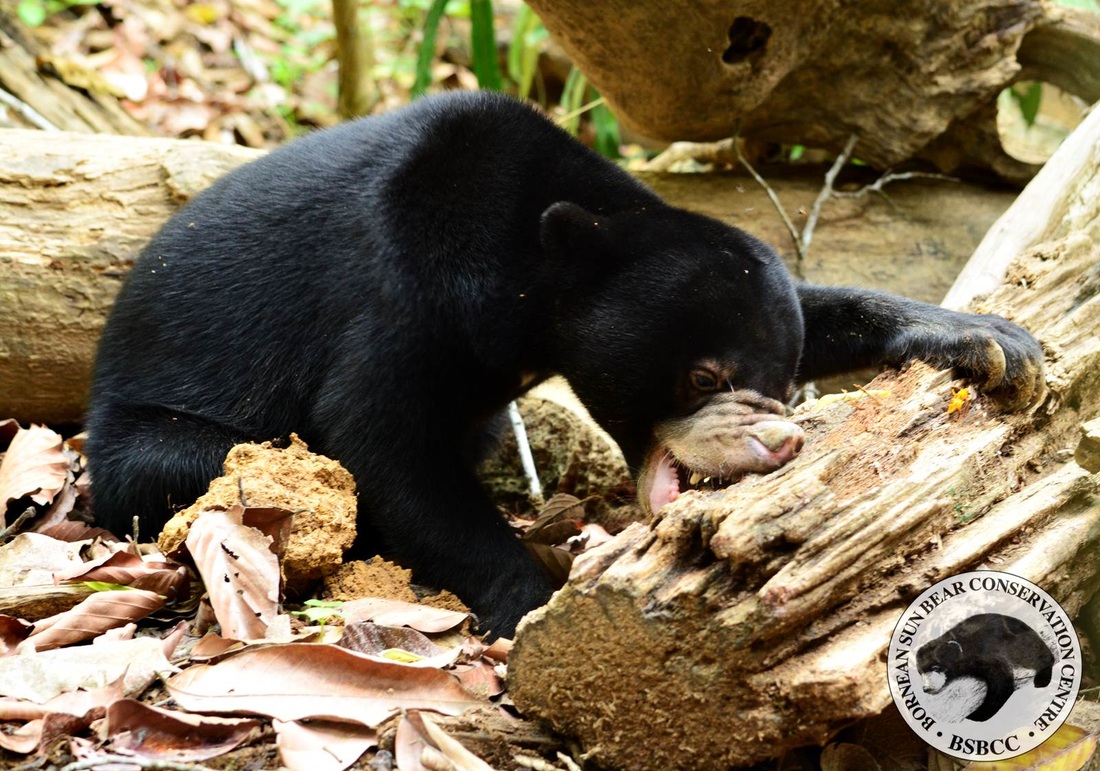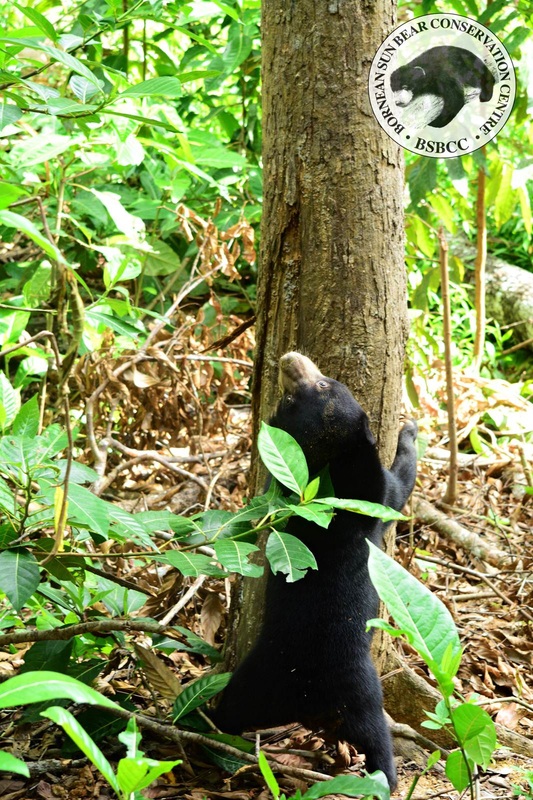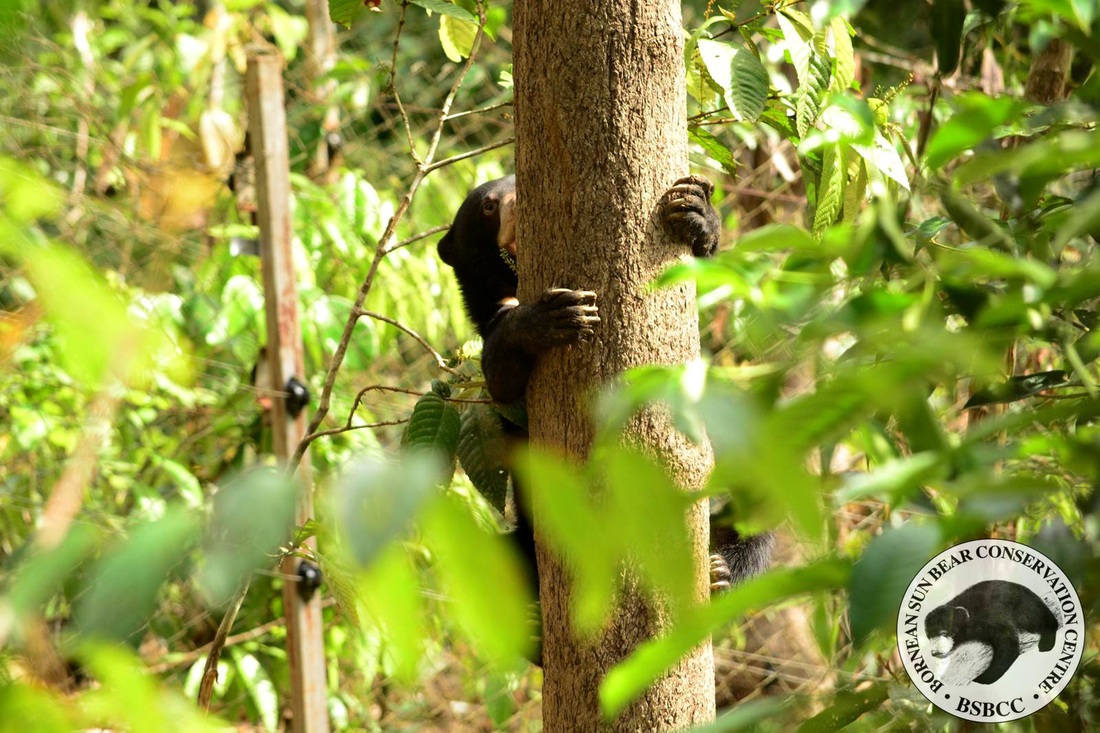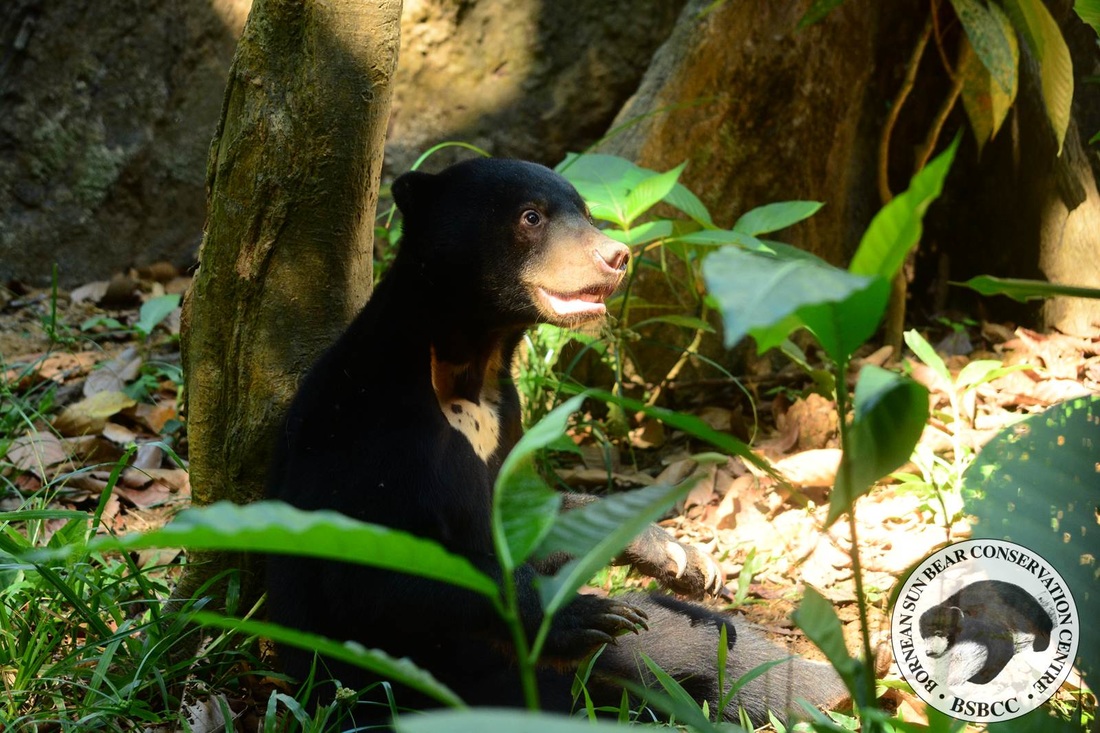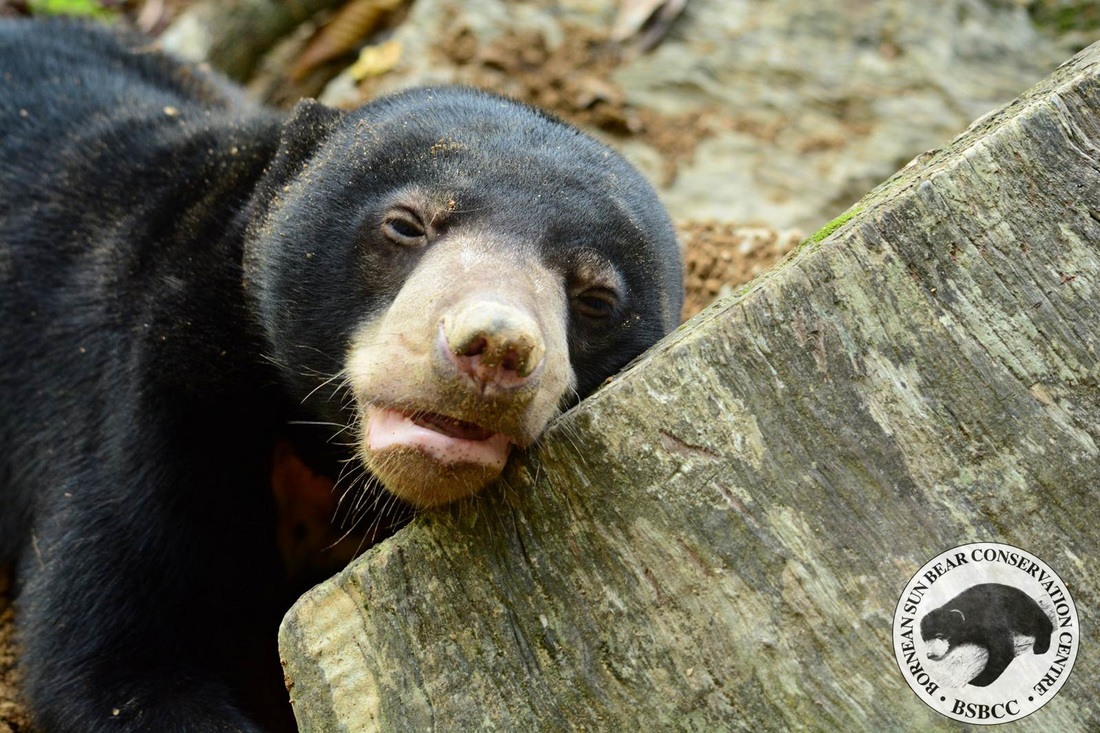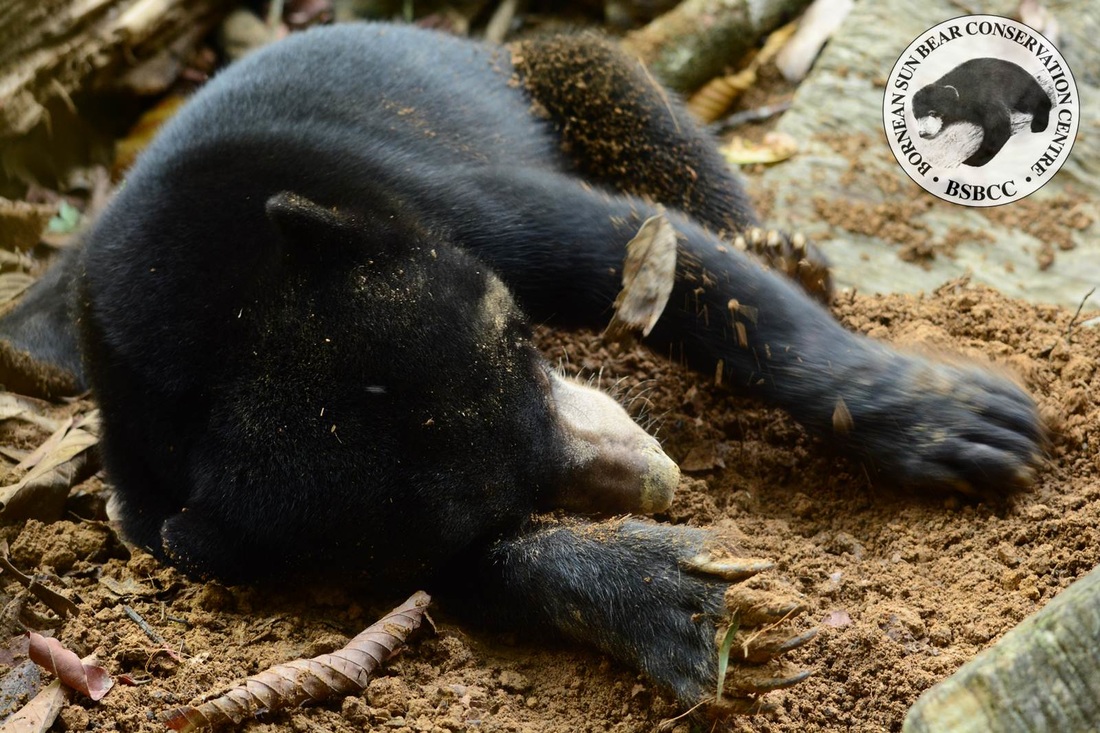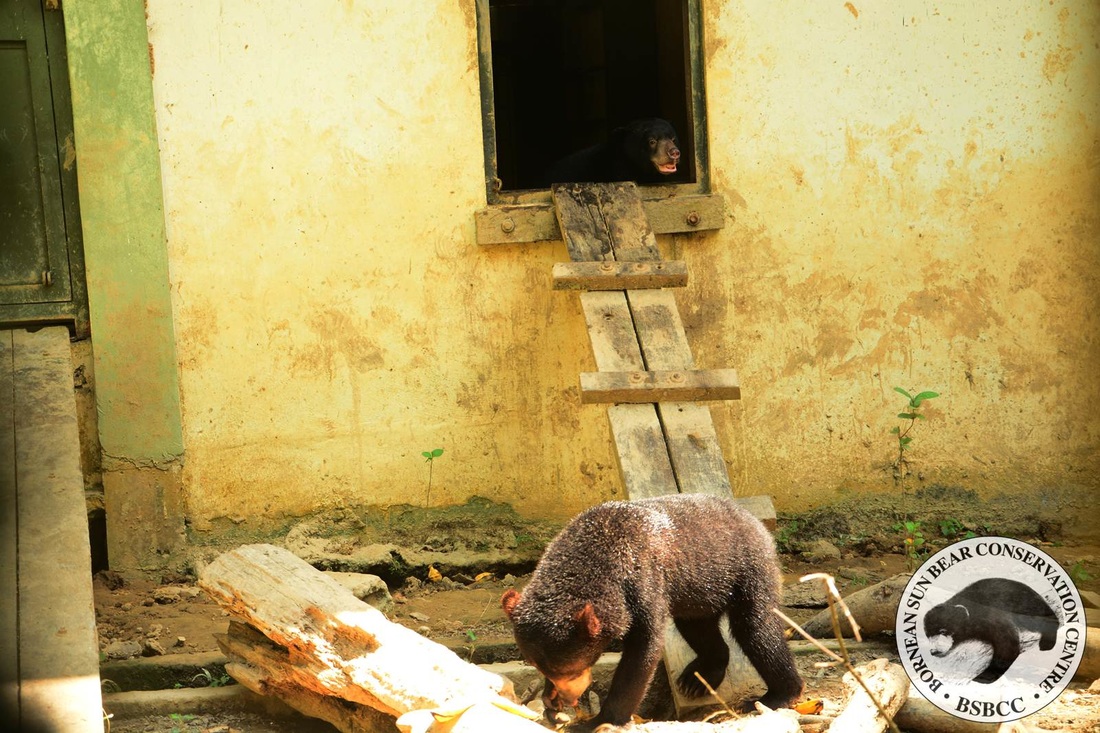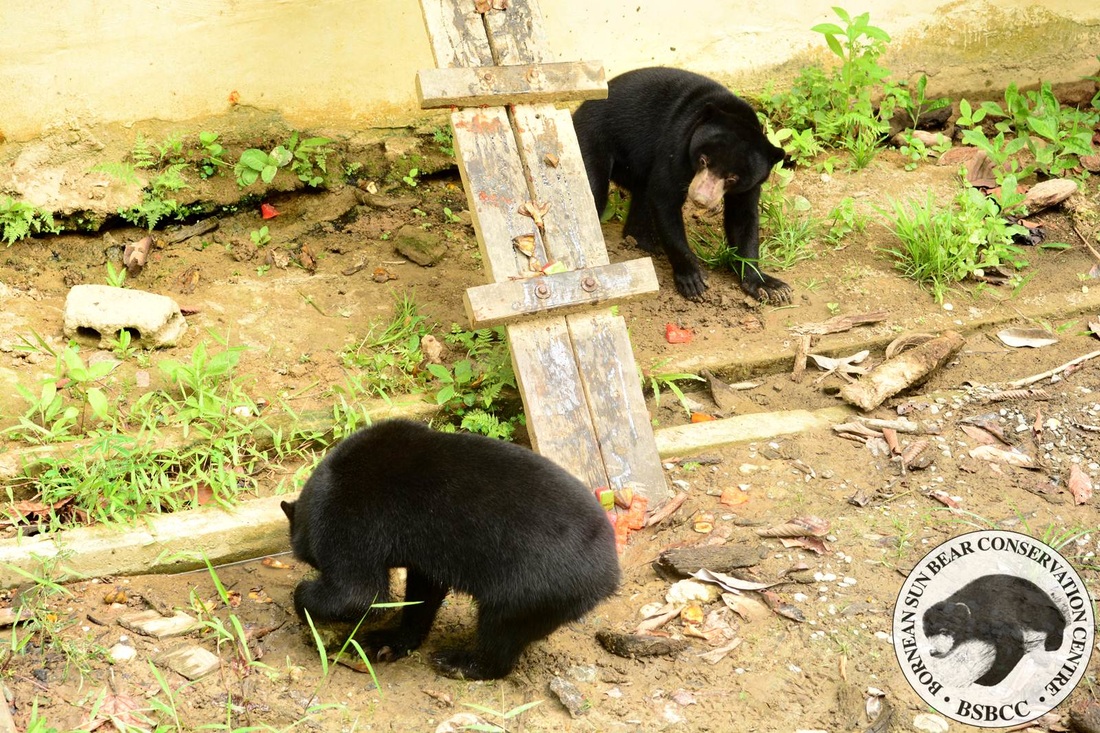Text and Photos by Brad Josephs
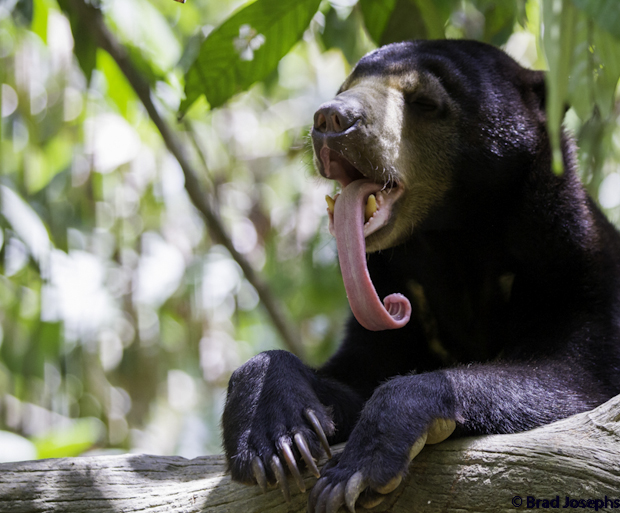
The sun bear, with its 18 inch long tongue, 7 inch long claws, is the smallest and one of the most endangered bears on earth.
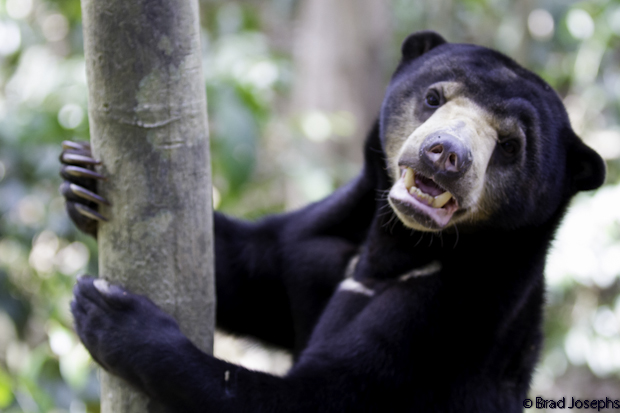
Sun bears are mostly arboreal, meaning they love to climb. They specialize in foraging for fruits and insects high in the canopy of tropical Asian rainforests.
This past April I had a two week gap between guiding trips in china and Borneo for natural habitat adventures this past April and I could think of no better to spend the time than support the Bornean Sun Bear Conservation Center (BSBCC.). The founder of the program, Wong Siew Te, is one of the great conservation champions of today. click here to read about Wong, The Sun Bear Hero of Sabah.http://www.alaskabearsandwolves.com/the-sun-bear-hero-of-sabah/
Wong was actually in my freshman class at the university of Montana wildlife biology program in the mid 90″s, and we remember each other, but i transferred to UAF before I really got to know him. He went on to become the first sun bear biologist and founder of the BSBCC, which focuses on public outreach and education, rescuing orphaned bears, or those confiscated by local authorities from the illegal pet trade, and rehabilitating them through introduction into semi wild enclosures. The final goal is to release rehabilitated bears that have regained wild instincts back into the wild to bolster numbers and genetic health of existing wild populations.
Wong took me as a volunteer and my duties were diverse. I cleaned the bear house daily, prepared and dispersed meals of rice, fruits, vegetables and eggs, collected treats such as fresh leaves and insects from the surrounding jungle, photographed the Bears for the center’s use, and set up an Instagram account to supplement their social media campaign. I learned so much and it felt so good to work up a sweat every day to help care for these orphaned sun bears, and take some pressure of the dedicated staff.
During dinner one night I asked Wong what I could do to help him the most and he said he needed funding for the release of a female bear named Lawa, a nine year old female bear who was rescued as a orphaned cub and rehabilitated at the BSBCC. Lawa is an excellent climber, builds nests in trees to sleep, forages for termites and other insects, and shows a healthy disassociation and avoidance of humans, which is a crucial behavior for released bears. She has been a candidate for release for a year, but the funding wasn’t there. It costs around 13000 U.S. Dollars to charter helicopters for Lawa and the staff to reach a safe wilderness zone, and pay for the radio collar equipment to track Lawa after her release. Monitoring and documenting the status of a released bear is crucial for biologists to learn how rehabilitated bears adjust to the wilderness.
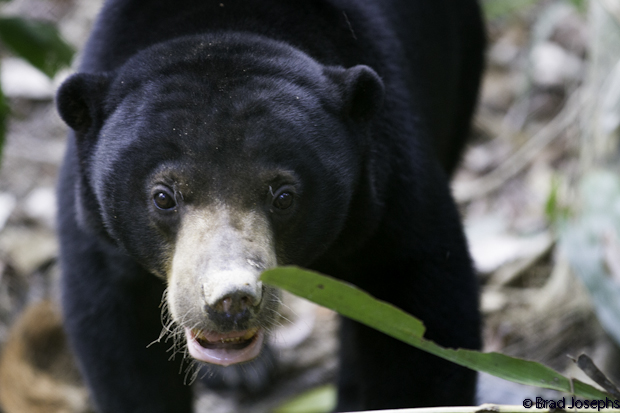
Lawa is quite elusive, and this is the only photo I got of her as she was normally high in the canopy, or hidden in the jungle of her large (300 square meter) enclosure. You can see the wild in her eyes.
I decided to try a Gofundme campaign to see if I could help with the financial constraints. A few days later I received an email from Natural Habitat Adventures saying that they would like to sponsor the campaign with an impressive 5000 dollars! I was so proud of my company, but not surprised since we are the most conservation focused travel company in the world.
After 10 days around 40 generous donors put up 5000 dollars into the GoFundMe campaign, including one of my high school friends, Ben Bourne, who gave $1000. I guided my trip in early May, which includes a visit to the BSBCC. Tim Brown, one of the travelers in my group pulled me aside and told me that he wanted to donate as much as was needed to finish the campaign, and donated $3000 right there. It was done in three weeks! Lawa will be a wild bear again before this summer is over.
My time volunteering at BSBCC was the most rewarding things I have done in many years. I learned that sun bears are a species unknown to the world, and are in dire circumstances as a species due to poaching and habitat loss. Building a rapport with the bears, and with the dedicated workers specializing in sun bear conservation was an amazing experience. I would recommend this program to anyone who is passionate about wildlife conservation, and can withstand hard work in an oppressive tropical climate.. I hope to return again to support this program, as it needs lots and lots more help. Lets keep fighting!
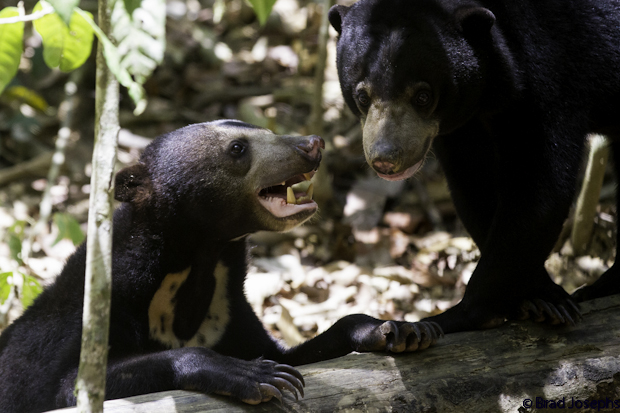
Sun bears at the BSBCC’s semi-wild forest enclosures interact with each other. As Wong told us, the best enrichment for sun bears in captivity are other sun bears.
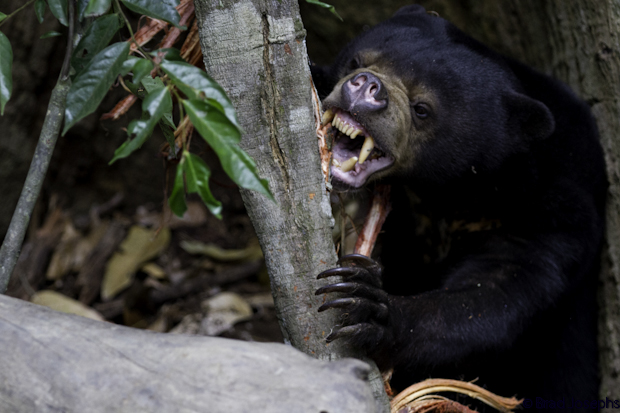
Sun bears are the smallest of the world’s 8 bear species, but they are as tough and intense as any animal I have ever encountered.
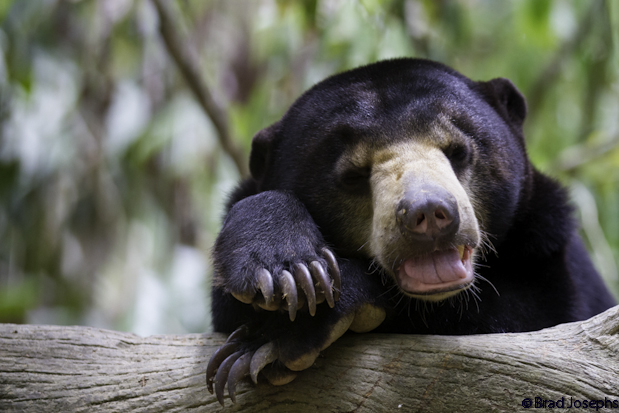
Damai napping on a branch, exhausted from exploring the forest enclosure, searching for food we hid for her, as well as termites and other natural food sources.
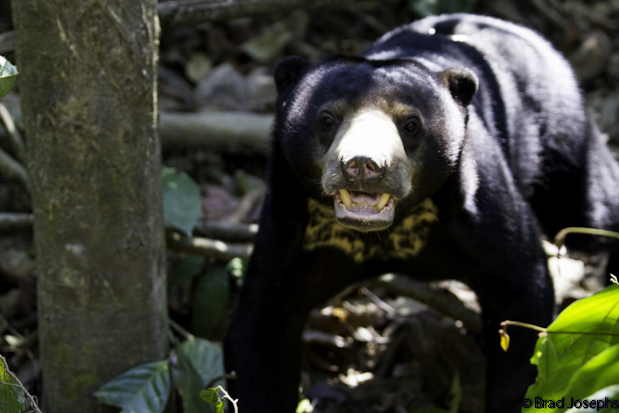
Every sun bear has a unique honey colored chest patch. This is the famous, charismatic Fulung.
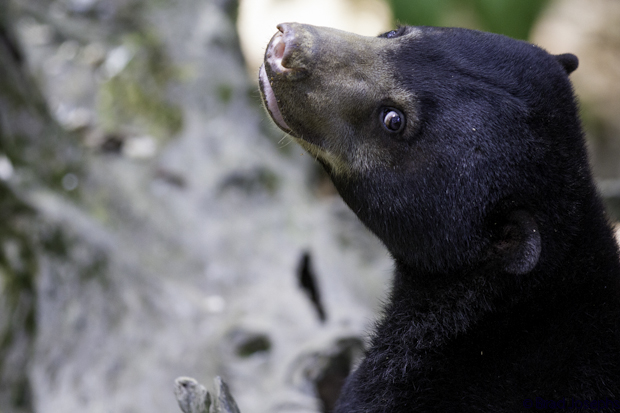
Intimate moment with a curious sun bear at the BSBCC.
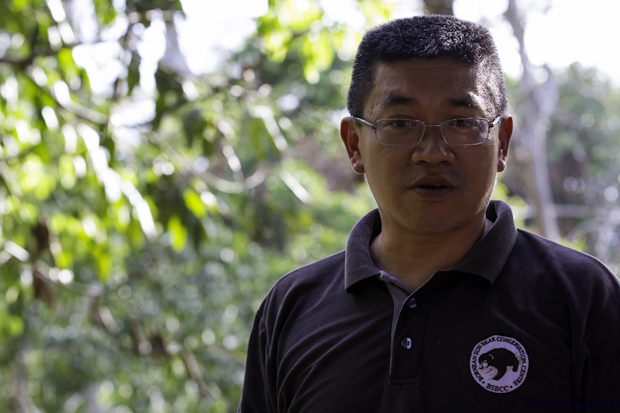
Wong spoke to our group about his work conserving sun bears during our visit to the Sun Bear Conservation Center in Sandakan, Sabah, Malaysian Borneo.
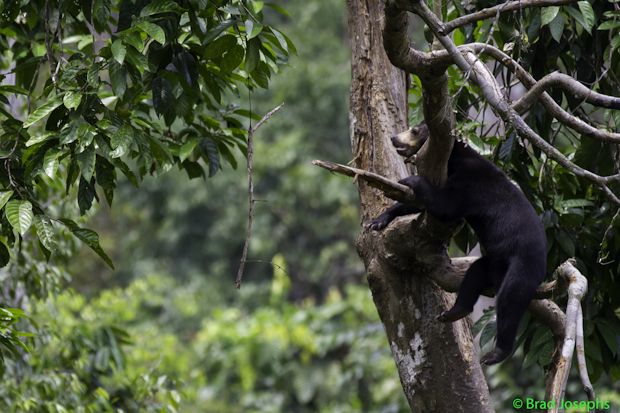
We watched this sun bear find a nice place to relax in the treetops from the observation platform at the Sun Bear Conservation Center. Sandakan, Borneo.
